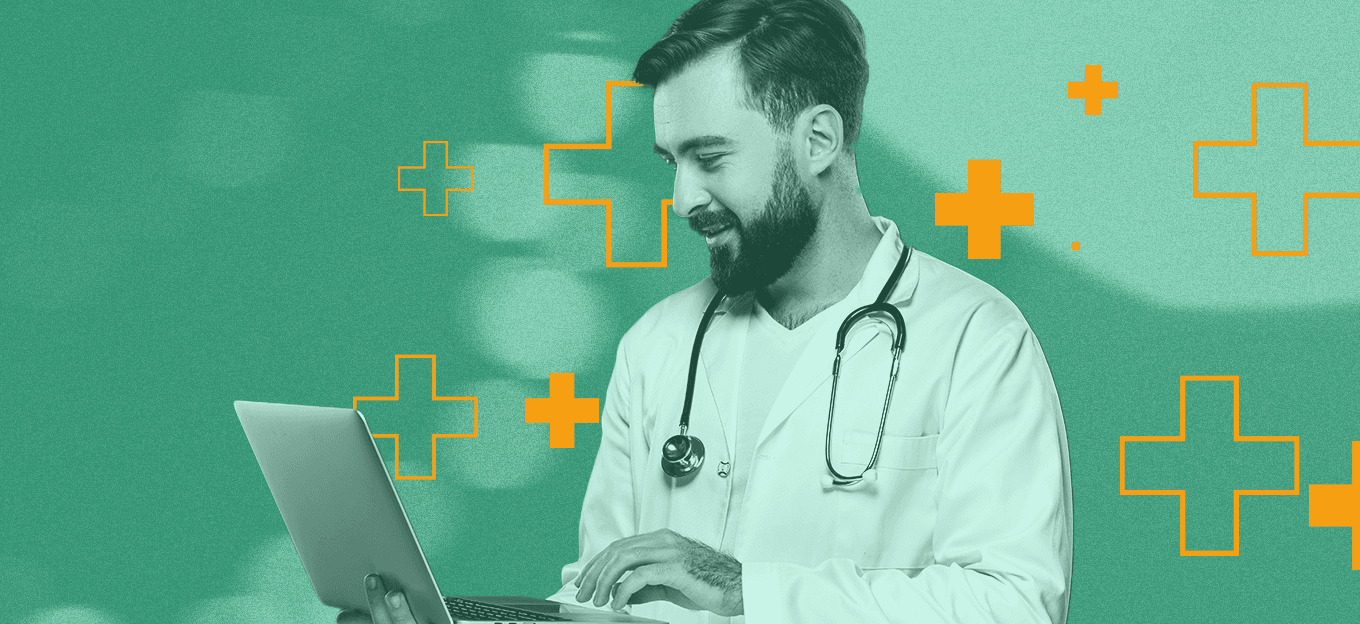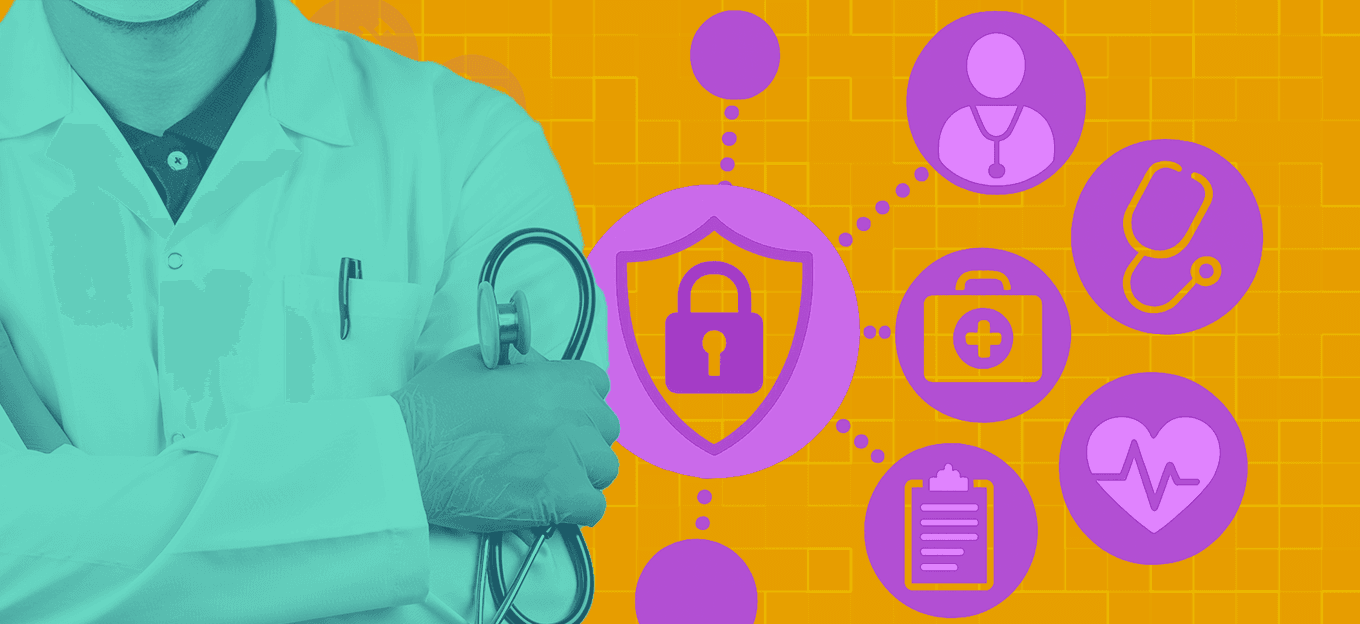The Doctor Will See You Now: Standard of Care for Patients
The Doctor Will See You Now: Standard of Care for Patients
- Last Updated: December 2, 2024
Guest Writer
- Last Updated: December 2, 2024



Remote working, remote learning, and even remote happy hour: the pandemic has forced us to adopt new ways of work and play to adapt to a new reality. And so, it fitted that the pan-EU research project IntellIoT gathered (remote) health tech experts to discuss the future of (remote) healthcare against this very particular backdrop.
Expert commentary revolved around the promise and potential pitfalls of integrating artificial intelligence, machine learning, and wearable technology into the future of healthcare practice. Representatives from cardiovascular medicine, technology providers, pioneering startups, and medical research shared their insights on building tomorrow’s Medtech solutions for better patient outcomes, increased efficiency, accuracy, and safety, as well as lower costs of care.
Learn more about how wearable technology, AI, and big data are poised to revolutionize standards of care for patients.
From launching an “Uber for at-home medical tests” to envisioning a not-so-distant future where personalized, real-time remote treatment is the standard of care, read on to learn how leveraging the power of AI will determine the future of medicine.
Remote Monitoring Outperforms In-Person Consultations
Though at first glance it might seem contrary to common sense (or downright implausible), doctors can gain a more accurate picture of patients’ health by remote monitoring than during an in-person examination. One need only to compare the breadth and depth of historical data points collected by a wearable device over a series of hours, days, or weeks to those few select moments during an on-site consultation: the sheer data volume—for example, heart rate measured regularly over the course of days, rather than the few seconds during a doctor’s visit—paint a much clearer picture of a patient’s overall cardiovascular health.
“When I go to the doctor,” explains Jörn Watzke, “[they] can make very detailed analyses with all the medical equipment they have. But this is a one-shot measurement at that moment. The big advantage [of a wearable] is that you get the data 24/7; you get it historically...You get it in high resolution; you can get it in real-time, you get a lot of details and also measure multiple sensors...these are huge benefits.” Watzke is Senior Director Global Business Development & Sales at Garmin, whose wearable devices collect millions of health data points from each user, from familiar metrics like daily steps to more subtle measurements such as heart rate variability or blood oxygen levels.
Propelled by ever-increasing precision sensor technology, Garmin’s wearables use both acceleration and PPG (photoplethysmogram, to detect microvascular blood volume changes) sensors to measure heart rate and variability, as well as an additional sensor for oxygen saturation. This combination of health parameters, collected by a wearable device, can already identify symptoms such as fatigue, drowsiness, and stress and point the way to risk identification of atrial fibrillation or sleep apnea, among other conditions. While Gamin’s technology can be used for said risk assessment (as well as rehabilitation and disease prevention), these wearables are not medical devices but consumer goods and do not offer direct diagnoses or perform any treatments.
Although wearable technology has made strides in recent years, there is still far to go. Watzke is convinced that it’s only a matter of time until ever-more reliable and precise sensors unlock as yet imaginary capabilities, such as noninvasive glucose measurement: “[I remember] when people said a PPG sensor would never work. Meanwhile, a PPG sensor brings really reliable data...We’ll see higher accuracy, and we’ll also see new sensors...it will be an exciting future.”
Show Me the Studies: Doctors Demand Proof
So how has the wearable tech and its resulting datasets been integrated into actual medical practice? “As a cardiologist,” explains Maria Marketou, “I can say that cardiovascular medicine is at the forefront of many machine learning applications. We need AI because we need to bring big data information together and incorporate it into mainstream clinical practice.” Marketou is a Senior Consultant at the University Hospital Cardiology Clinic in Heraklion, Greece. From diagnosis to post-operative care, doctors already rely on AI to parse immense sums of data from wearable devices and interpret imaging: AI is used in radiology to more accurately detect and analyze details invisible to the human eye.
From a practitioner’s perspective, the theoretically positive implications for AI integration are fairly clear: speeding up administrative tasks means less time spent arranging appointments and follow-up care, resulting in more one-on-one time with patients. Increasingly complex data sets can be more accurately interpreted, reducing human error. Quickly identifying patterns could lead to automatically diagnosing diseases, and remote monitoring of patients via wearables that transfer personalized, real-time data improves the quality of care, increases compliance, and reduces costs, not to mention making healthcare more easily accessible for the patient.
But there are significant hurdles to implementation, not least a wariness on both doctors and patients to mix computers and medicine. Doctors won’t incorporate new tools into their practice without the gold standard of proven effective through clinical trials. Patients are wary of having their medical data tracked and shared. Plus, why should they trust a computer algorithm to make decisions about their health? And society views increasing automation with skepticism, raising fears of disappearing jobs.
While AI has the power to transform medical care in many respects, we shouldn’t jump too quickly to any conclusions, warns Marketou: “[Medicine] has several limitations...medical guidelines cannot cover all the clinical cases, and the variability of experience among physicians is high [and] the patient’s outcome is unpredictable...I’m convinced that AI networks are very powerful, but to succeed, we need to keep in mind that they will never be powerful enough to understand the complexity of medicine.” According to Marketou, it is essential to build solutions for healthcare complementary to doctors’ experience and expertise.
Keeping Humans In the Loop
The EU research project aims to tackle this in its medical Applications. With additional workstreams in both manufacturing and agriculture, the project fosters the development of humanized IoT and AI devices and systems, championing end-user trust, adequate security, and privacy by design. The medical Applications works with heart failure patients to apply AI, 5G, and IoT to improve the management of chronic disease in an outpatient setting.
"Anca Bucur, Senior Researcher at Philips who leads the healthcare Applications at IntellIoT, explains, "We want to show that a remote and quasi-continuous support system can provide effective recommendations, support, and real clinical benefit in a very, very safe way for the patient.” And while the focus for this project is on patients with cardiovascular disease, Bucur is also quick to emphasize that the underlying research results will be transferable to other specializations."
In addition to remote monitoring and rehabilitation of patients and supporting clinicians as they care for them, the project will also identify predictors for positive or negative patient outcomes: in short, what types of environmental variables might predict whether a patient would fare better or worse?
One of the larger topics that the project has incorporated since its inception is the often thorny topic of winning end-user trust when merging AI, IoT, and healthcare. On the one hand, with the success of doctors and the health of patients at the center of the project, humans are kept in the technical development loop by default. On the other hand, how can you win patients’ trust and medical practitioners’ buy-in, considering the technological complexity at hand? The stakes for willing adoption on the part of both doctor and patient are high: in the case of a heart attack, between life or death. And in the case of adopting new technology, between tools with the power to heal and those that might hurt, both in terms of health outcomes and data privacy concerns.
Addressing Interoperability
While data privacy and security questions are front-of-mind in the development of AI and IoT health tech solutions, there are other data concerns afoot. “Any AI system is only as good as the quantity and quality of its data,” says Marketou from her office in Heraklion. This sentiment was echoed by Fadi Haddad, Head of Global Business Development at Medicus AI, a Vienna-based health tech startup leveraging AI to help people better understand and care for their health. “This is one of the bigger challenges currently in health care...that health data is not harmonized or structured in one place. You have different data structures, namings, units, ranges, and in some cases, different file types.” Medicus developed its own AI-based interoperability engine to address this problem, one that merges different information systems by leveraging natural language processing, optical character recognition, and machine learning.
The result? With the additional support of doctors, Medicus uses this clean data to build its medical reasoning engine, which delivers personalized information to the end-user by interpreting various data points. The company is working to build products that support people to reach optimal health outcomes and is on a mission to bridge the gaps in remote medical practice, providing complete and comprehensive remote care. For example, Medicus has piloted projects to support pregnant people in Hong Kong and the recently launched door-to-door phlebotomist testing pilot, enabling remote patients to book an appointment to collect a test sample from the comfort of their home. “It works like an Uber ordering experience. You can track when the phlebotomist is coming to you and when the results are ready,” explains Haddad. Sent to the Medicus app, the results are in turn explained and interpreted for the patient.
The Future of Medicine: Early Detection, Prevention, and Personalization
So how soon will we all be signing up for at-home phlebotomy tests? Perhaps not too far from now. The COVID-19 pandemic has accelerated telemedicine adoption, priming the populace to embrace remote care: “We now see a huge push into telemedicine because people were really forced during the pandemic...to offer the service to patients,” explains Watzke, the Senior Director at Garmin. “Doctors who were a little bit reserved are now much more open [to telemedicine].”
But the revolution in medical care doesn’t stop at new modes of consultation and testing: with increased ability to collect and assess patients’ medical data, doctors and insurers (and patients themselves) can anticipate a new push for early detection of diseases, resulting in prevention measures, and the personalization of care: imagine a future where based upon data collected from a wearable device, cross-referenced to medical history and clinical study data, medical providers can catch pre-diabetes or even the beginnings of depression, spurring earlier intervention. In another twist, this variety of data—measuring and merging various systems including cardiovascular, pulmonary, and/or endocrine, etc.—can provide a more holistic view of illness and better understand the interrelation of the various parts of the human body.
Get Involved
The future of MedTech is bright, with thrilling opportunities for leveraging big data, AI, sensor technology, and wearables to improve patient outcomes and support medical professionals. As a highly regulated industry, development of MedTech solutions requires complicated points of entry and slower adoption rates. There are many programs, including the IntellIoT project and network, that facilitate connections between MedTech stakeholders: technologists, healthcare providers, and companies both big and small.
The Most Comprehensive IoT Newsletter for Enterprises
Showcasing the highest-quality content, resources, news, and insights from the world of the Internet of Things. Subscribe to remain informed and up-to-date.
New Podcast Episode

Moving Past the Pilot Phase in IoT and AI
Related Articles





